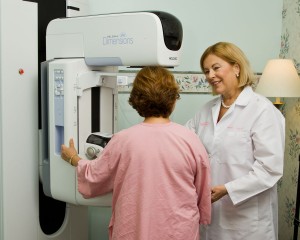In breast cancer detection, the test matters
(ARA) – One in eight American women will be diagnosed with breast cancer in their lifetime. However, early detection coupled with advanced treatment options has cut mortality rates by a third in the U.S. over the past 20 years. Today, a new breakthrough technology is poised to provide a dramatic improvement in breast cancer detection by making mammograms more detailed and accurate.
Catching breast cancer early
Studies show that when breast cancer is detected early the chance for successful treatment is nearly 100 percent. Mammograms are a critical component of a successful screening program. In fact, mammograms can identify an abnormal breast mass up to two years before it can be detected by touch. It’s for this reason that the American Cancer Society recommends every woman, every year, starting at the age of 40, get a mammogram.
3D mammography – Changing the face of breast cancer screening
A new imaging technology called 3D mammography or breast tomosynthesis is changing how doctors screen for breast cancer. This sophisticated technology significantly improves breast cancer screening by identifying small cancers that may have been missed by traditional mammography.If cancers are found when they are small, treatment options are generally less traumatic and the chance for a cure is greater.
Another benefit of 3D mammography is its ability to reduce stress-inducing call backs. As many as one out of 10 women who have a routine screening mammogram will be asked to come back for additional tests. The majority of these women – up to 80 percent – will experience what’s called a “false-positive” which means that an area that looked suspicious on their screening mammogram turned out, upon further testing, to be normal.
3D mammography makes finding breast cancers easier
Current mammography relies on a 2D image. However, this technology has its limits because the breast is a 3-dimensional object composed of different structures, such as blood vessels, milk ducts, fat, and ligaments. All of these structures, which are located at different heights within the breast, can overlap and cause confusion when viewed as a 2-dimensional, flat image. This confusion of overlapping tissue is a leading reason why small breast cancers may be missed and normal tissue may appear abnormal, leading to unnecessary call backs. Many doctors have reported that the introduction of Hologic’s Selenia Dimensions tomosynthesis system improves breast cancer detection by overcoming many of the limitations inherent in conventional 2D mammography.
Although patients will notice little difference between a 2D and a 3D mammogram, the 3D technology gives doctors a clearer view through the overlapping structures of breast tissue. Reading a breast tomosynthesis exam is like flipping through the pages of a book to view one page at a time instead of seeing the whole breast reduced to a single frame, as is the case with conventional 2D mammography.The ability to look at each layer of breast tissue millimeter by millimeter allows doctors to identify individual structures in the breast free from the confusion of overlying tissue.
The bottom line
Women should talk to their physician about the best screening program for them, based on their age, family history and medical profile. Women need to pay attention to any changes, such as unusual lumps, swelling, irritation, dimpling, or pain in the breast or nipple. Finally, women who are 40 and older should be sure to have a mammogram every year.
For Mammogram in NJ visit NJTopDocs.com
